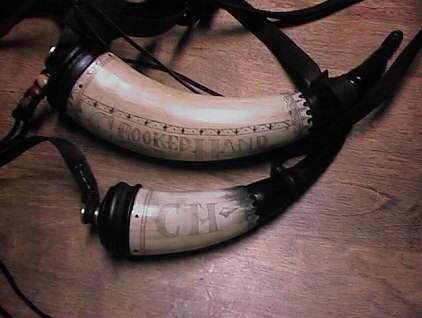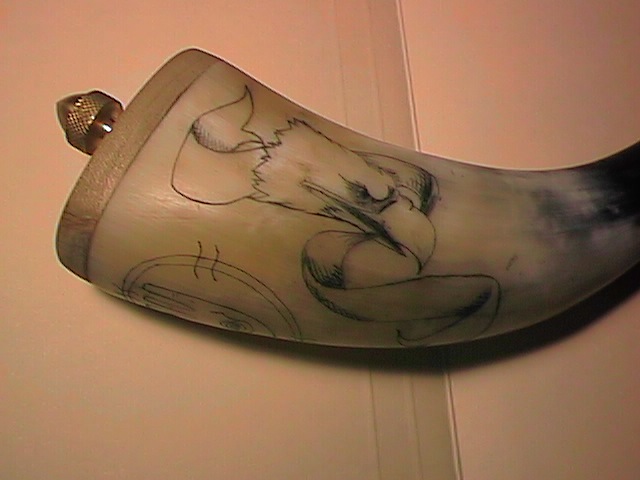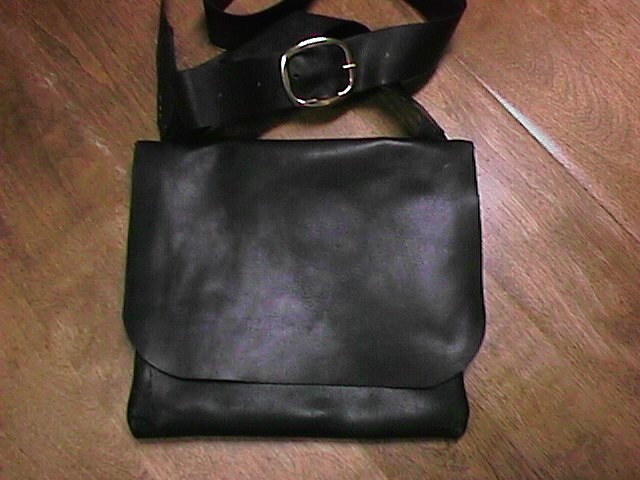|
The pictures on this page belong to Mark Toigo (Crooked Hand) and it is with his permission that I share them with you.
Scrimshaw (skrim'sha) is the art of "drawing" pictures on polished ivory, bone or horn with a sharp needle
or knife. Scrimshaw is said to be the only original American art form. Practiced for centuries by the Inuit and other native
groups along the Northwest Coast, it was adopted by the Yankee whalemen of the early 1800's. The origin of the word is obscure;
one interesting etymology is a Dutch phrase meaning "to waste one's time!" The term "scrimshaw" also
applies to carved or pierced bone or ivory, since much of the whalemen's work was carved rather than etched. Using a jack
knife or sharp nail for a scribe and lampblack as ink, the sailors scratched out primitive renditions of their ship, the hunt
or the girl back home.
A Scrimshander is, of course, someone who makes scrimshaw. Scrimshaw is a wonderful work
of art. It has been used to show maritime art, maps, nature and a host of other things.
Scrimshaw is not only
found on pieces of ivory but on cow horns as well. Since paper was a rare commodity in the mountain man days, they often times
had maps scrimshawed into the horns they carried so they would have it readily at hand and not fear losing it.

Notice the detail in the pictures shown here. Each one of the borders is comprised of hundreds of tiny "scratches"
made into the horns. Then ink is applied to make the scratches show up. The excess will wipe off easily while the ink that
goes into the scratches of course stay in and stain the design dark.
Scrmshawed items were often part of the mountainman
past since they could be carried and referenced to much more easily than paper that would tatter and tear over time or even
be lost. However the mountain men knew that if they had a map or some such thing inscribed on a powder horn or other such
item they frequently carried, they would have it readily available and would notice if it wasn't there quicker than they would
if it were a piece of paper.


|




